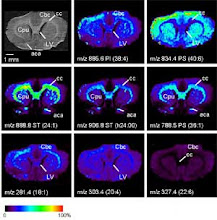DNA Parentage testing no longer needs to be a daunting task.The Home DNA Home Paternity Testing System is a premium 16-marker DNA test - the most powerful standard DNA test in the industry. Simple, accurate and affordable peace of mind is now available in the privacy and convenience of your own home dna sequence Test for Immigration.
DNA sequencing is one of the most important platforms for the study of biological systems today.DNA Sequence and Dna sequence Test for Immigration determination is most commonly performed using dideoxy chain termination technology. Recently, pyrosequencing has emerged as a new sequencing methodology. This technique is a widely applicable, alternative technology for the detailed characterization of nucleic acids.One of the major problems in DNA cycle sequencing and Dna sequence Test for Immigration are that when fluorescent primers are used the reaction conditions are such that the nested fragment set distribution is highly dependent upon the template concentration in the reaction mix.
We have recently observed that the nested fragment set distribution for the DNA cycle sequencing reactions using the fluorescent labelled terminators is much less sensitive to DNA concentration than that obtained with the fluorescent labelled primer reactions as described above Dna sequence Test. In addition, the fluorescent terminator reactions require only one reaction tube per template while the fluorescent labelled primer reactions require one reaction tube for each of the four terminators. Pyrosequencing has the potential advantages of accuracy, flexibility, parallel processing, and can be easily automated used for Dna sequence Test for Immigration.
One of the promises of the Human Genome Project was to change the face of biomedicine. This promise has been satisfied in many ways through the study of genomics and proteomics – new ways of studying biology that arose directly from the Human Genome Project. While we have a significantly better understanding of human genetics there is still much more to be done in the areas of improving diagnosis of disease, early detection of genetic predispositions to disease, rational drug design, improved drug target discovery and pharmacogenomics (or ‘custom drugs’). The promise of DNA sequencing as a tool to understand disease,Dna sequence Test for Immigration, as well as other fundamental biological problems, established this need for new DNA sequencing technologies that could deliver more information.
Advancements in molecular medicine due to next generation sequencing is not limited to the new study of small RNAs but also includes other areas in which the deep sequencing of a population of molecules is essential to the understanding of the molecular processes at work. Drug resistance is one area in particular that will benefit from the application of next generation sequencing and Dna sequence Test for Immigration. The application of deep sequencing for drug resistance has been applied to infectious agents such as Mycobacterium tuberculosis, Staphylococcus aureus and HIV. The next generation sequencing platforms make the sequencing of whole bacterial genomes a routine practice. In fact several hundred different bacteria have been partially or completely sequenced using these new technologies.
DNA sequencing is one of the most important platforms for the study of biological systems today.DNA Sequence and Dna sequence Test for Immigration determination is most commonly performed using dideoxy chain termination technology. Recently, pyrosequencing has emerged as a new sequencing methodology. This technique is a widely applicable, alternative technology for the detailed characterization of nucleic acids.One of the major problems in DNA cycle sequencing and Dna sequence Test for Immigration are that when fluorescent primers are used the reaction conditions are such that the nested fragment set distribution is highly dependent upon the template concentration in the reaction mix.
We have recently observed that the nested fragment set distribution for the DNA cycle sequencing reactions using the fluorescent labelled terminators is much less sensitive to DNA concentration than that obtained with the fluorescent labelled primer reactions as described above Dna sequence Test. In addition, the fluorescent terminator reactions require only one reaction tube per template while the fluorescent labelled primer reactions require one reaction tube for each of the four terminators. Pyrosequencing has the potential advantages of accuracy, flexibility, parallel processing, and can be easily automated used for Dna sequence Test for Immigration.
One of the promises of the Human Genome Project was to change the face of biomedicine. This promise has been satisfied in many ways through the study of genomics and proteomics – new ways of studying biology that arose directly from the Human Genome Project. While we have a significantly better understanding of human genetics there is still much more to be done in the areas of improving diagnosis of disease, early detection of genetic predispositions to disease, rational drug design, improved drug target discovery and pharmacogenomics (or ‘custom drugs’). The promise of DNA sequencing as a tool to understand disease,Dna sequence Test for Immigration, as well as other fundamental biological problems, established this need for new DNA sequencing technologies that could deliver more information.
Advancements in molecular medicine due to next generation sequencing is not limited to the new study of small RNAs but also includes other areas in which the deep sequencing of a population of molecules is essential to the understanding of the molecular processes at work. Drug resistance is one area in particular that will benefit from the application of next generation sequencing and Dna sequence Test for Immigration. The application of deep sequencing for drug resistance has been applied to infectious agents such as Mycobacterium tuberculosis, Staphylococcus aureus and HIV. The next generation sequencing platforms make the sequencing of whole bacterial genomes a routine practice. In fact several hundred different bacteria have been partially or completely sequenced using these new technologies.
